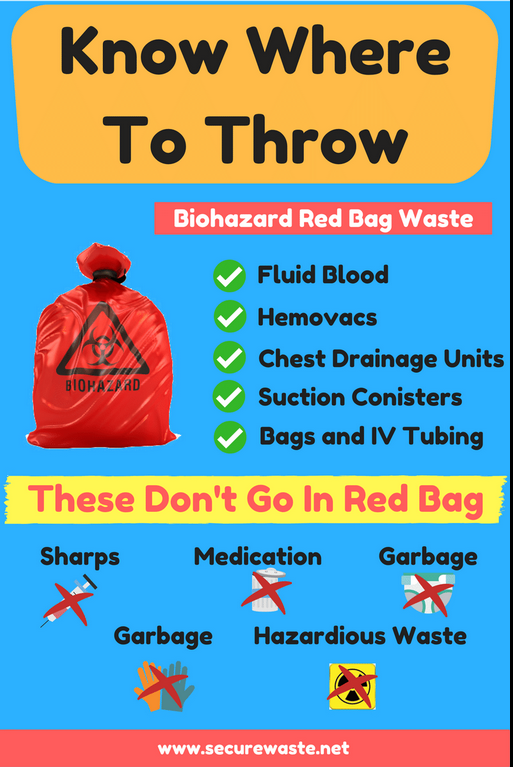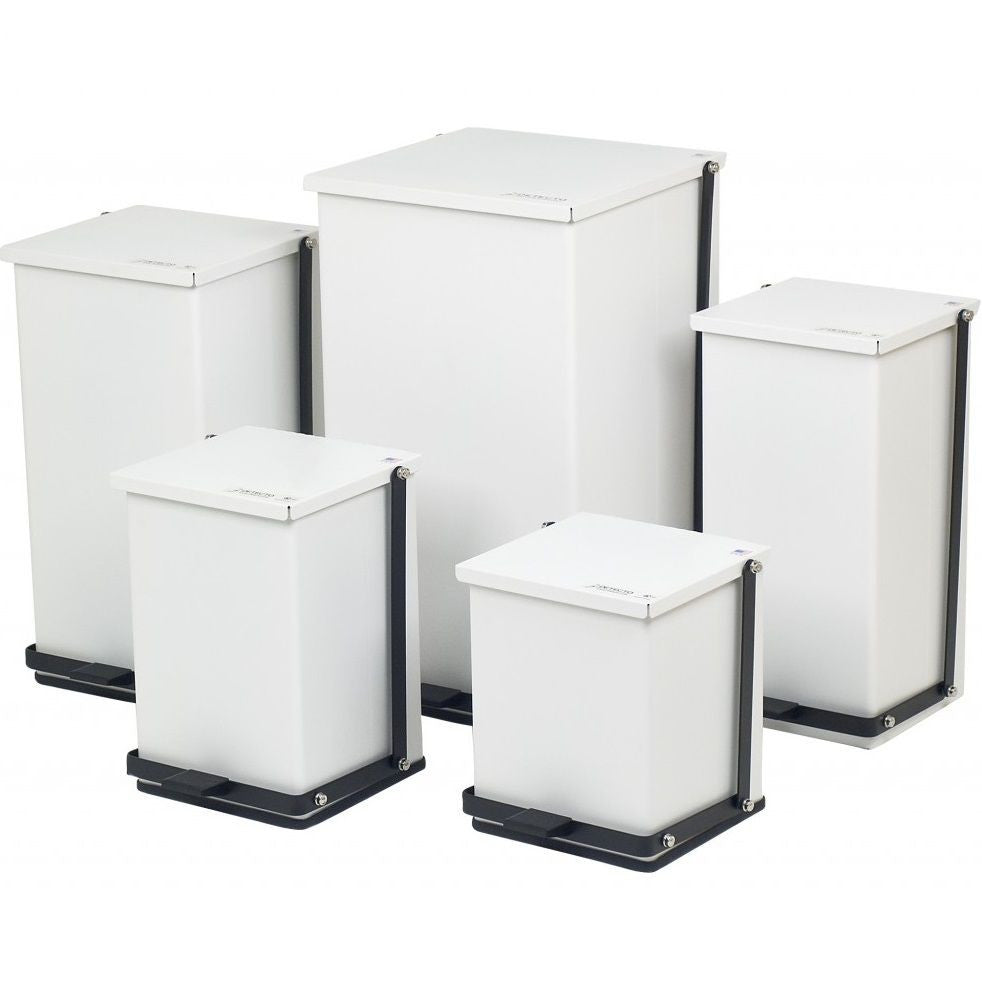Stay Ahead of Regulations: Professional Recommendations on Medical Garbage Disposal
In a world where the healthcare sector is continuously evolving, it is essential for clinical facilities to stay in advance of policies when it comes to the correct disposal of clinical waste. From understanding the various classifications of clinical waste to carrying out the best collection and partition techniques, this conversation will provide useful insights and workable suggestions to aid facilities remain ahead of guidelines in the ever-changing landscape of medical waste disposal.
Recognizing Medical Waste Categories
Recognizing clinical waste classifications is essential for appropriate disposal and administration in healthcare facilities. Clinical waste refers to any type of waste created by health care tasks that may present a hazard to public health and wellness or the setting. It is essential to classify clinical waste accurately to ensure its secure handling, disposal, transportation, and treatment.
There are several classifications of clinical waste that health care facilities require to be aware of. One of the most common classifications consist of transmittable waste, pathological waste, sharps waste, pharmaceutical waste, and chemical waste. Each category has particular standards and laws for its proper management and disposal.
Pathological waste refers to human cells, body organs, or body components that need unique handling and disposal. Drug waste consists of run out, extra, or contaminated medicines that require cautious handling and disposal.
Staying Up-To-Date With Regulatory Changes
Remaining present with regulative changes is essential for healthcare centers to make certain conformity and appropriate management of clinical garbage disposal. medical waste removal. With regulations frequently progressing, it is vital for healthcare centers to remain up-to-date to stay clear of charges, fines, and possible damage to the environment and public health and wellness
To remain ahead of governing changes, medical care centers need to establish a system for monitoring and monitoring updates. This can be done by subscribing to regulative newsletters, participating in seminars and workshops, and actively joining market organizations. Furthermore, centers ought to mark a team member or team liable for staying educated and disseminating details to relevant stakeholders.
Routine interaction with regulative firms is also crucial. Healthcare facilities need to establish connections with neighborhood, state, and federal companies to guarantee they understand any modifications in laws that may affect their waste monitoring practices. This can be done with normal meetings, participation in public comment durations, and aggressive engagement with regulative firms.
Moreover, healthcare centers need to take into consideration partnering with waste administration companies that focus on clinical waste disposal (medical waste disposal services with WasteX). These business are usually well-versed in the most recent guidelines and can give guidance and support to guarantee compliance
Carrying Out Correct Collection and Partition Approaches
To effectively manage medical waste disposal, healthcare facilities must establish proper collection and segregation methods in accordance with regulatory standards. Applying these approaches ensures the safe handling and disposal of potentially hazardous products, shields the setting, and decreases the threat of injuries and infections to medical care workers and the general public.
Proper collection and segregation approaches entail making use of assigned containers and identifying systems. Healthcare centers need to supply clearly labeled containers for various kinds of medical waste, such as sharps, infectious waste, pharmaceutical waste, and non-hazardous waste. These containers should be color-coded and plainly marked to avoid complication and advertise easy recognition.
In addition, health care facilities need to train their staff on the proper treatments for collecting and setting apart medical waste. This includes enlightening them on the different kinds of waste, the proper containers to use, and the relevance of complying with policies and guidelines. Routine training sessions and refresher training courses ought to be performed to make sure that team member remain updated on best methods.
Furthermore, health care facilities must develop a system for routine collection and disposal of clinical waste. This may entail partnering with certified waste monitoring companies that focus on clinical waste disposal. These firms will make sure that the accumulated waste is carried and disposed of in compliance with governing requirements.
Selecting the Right Disposal Approaches

Incineration is among the most typical and efficient approaches for disposing of certain kinds of medical waste, such as pathological waste and sharps. It involves the regulated burning of waste at heats, reducing it to ash. Incineration can launch unsafe toxins right into the air and contribute to air pollution.

Various other disposal methods consist of chemical treatment, microwave therapy, and landfilling. Chemical treatment entails making use of chemicals to decontaminate and reduce the effects of the waste. Microwave therapy uses microwave power to heat and sanitize the waste. Landfilling involves burying the waste in a marked landfill location (medical waste disposal services with WasteX). Nevertheless, landfilling needs to be the last hope due to the prospective danger of contamination to soil and groundwater.
Guaranteeing Compliance Through Documentation and Training
After thoroughly considering the suitable disposal methods for medical waste, healthcare centers have to make certain conformity with guidelines and lessen environmental effect by executing effective documentation and training treatments. This action is vital in preserving a lasting and risk-free atmosphere for both healthcare employees and the public.

Training is equally essential in making sure compliance with laws. Healthcare workers that take care of medical waste ought to get ideal training on waste partition, handling, and disposal procedures. This training must cover subjects such as the correct use personal protective equipment, identification of different sorts of waste, and the proper disposal approaches for each waste category. By providing detailed training, medical care centers can encourage their team to make informed decisions and minimize the risk of improper waste disposal.
Verdict
Finally, remaining ahead of policies in medical garbage disposal is critical for medical care facilities. medical waste removal services. Comprehending the different categories of clinical waste, staying updated with regulatory modifications, executing proper collection and partition techniques, choosing the ideal disposal approaches, and guaranteeing compliance via paperwork and training are all important actions. By complying with these guidelines, medical care organizations can effectively get rid of and handle of clinical waste in a risk-free and responsible fashion
From comprehending the various classifications of medical waste to implementing the ideal collection and segregation approaches, this discussion will certainly offer beneficial insights and workable suggestions to help centers stay ahead of laws in the ever-changing landscape of medical waste disposal. - medical waste disposal services with WasteX
The most common classifications consist of transmittable waste, pathological waste, sharps waste, pharmaceutical waste, and chemical waste. Medical care centers should provide clearly labeled containers you could check here for different types of medical waste, such as sharps, infectious waste, pharmaceutical waste, and non-hazardous waste. Health care facilities ought to establish an extensive system to tape and track all elements of medical waste disposal, consisting of kinds of waste created, amounts, and disposal approaches made use of. Medical care employees that take care of clinical waste needs to obtain ideal training on waste segregation, handling, and disposal procedures.